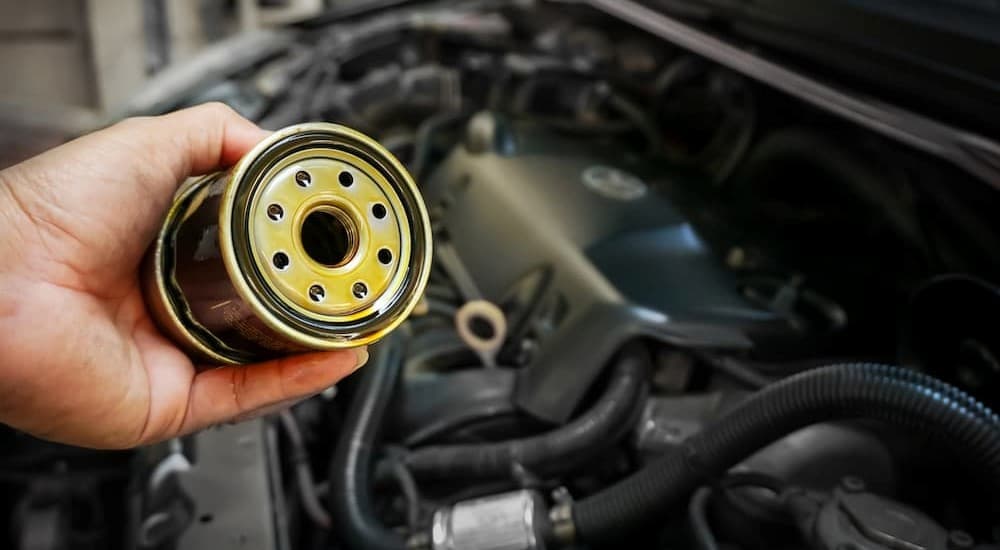Oil becomes more than a maintenance interval for drivers who push their engines beyond the average commute. It becomes a tuning tool. Whether it’s high-revving track sessions, heavy-duty towing, or sustained highway pulls, demanding conditions place a unique strain on internal components. Factory recommendations are built around average use cases, not enthusiasts running wide-open throttle in 100-degree heat or hammering through cold-start redlines at sunrise. Making the right choice for your oil change can make the difference between consistent power and gradual performance loss.
Engine oil choice isn’t just about viscosity ratings on the bottle, but about how those ratings interact with bearing clearances, operating temperatures, and the engine’s expected workload. Specialty oils offer enhanced shear resistance, thermal stability, and additive packages designed to combat the stress of aggressive driving. But are they worth the cost? How far can viscosity be pushed before gains become risks?
This deep dive explores how to unlock more value from engine oil without falling for myths or marketing claims. Topics include the real advantages of race oil, what happens when oil weight is adjusted beyond factory spec, and whether old-school tricks like overfilling the sump still have a place in modern performance setups. For those who demand more than average from their machines, every drop of oil matters.
The Role of Oil Monitoring and Analysis
Modern performance tuning doesn’t end under the hood. Instead, it now includes what’s happening at a molecular level. Oil analysis provides hard data to support every decision for drivers who want to extend engine life and boost performance. By sending a small oil sample to a lab, enthusiasts can uncover metal wear signatures, fuel dilution, coolant intrusion, and the breakdown rate of additives. This turns oil changes into data-driven maintenance, not just mileage-based guessing.
Many enthusiasts also adopt advanced oil monitoring systems through built-in OEM sensors or aftermarket modules to track real-time temperature, pressure, and oil life. These systems go far beyond a basic reminder light. They help detect problems early, verify that oil stays within its optimal operating window, and guide tuning changes based on actual oil behavior under load. If the oil temperature regularly spikes during hard pulls or towing, that’s a signal to upgrade the oil cooler or switch to a higher viscosity oil.
Oil analysis and real-time monitoring empower performance drivers to treat oil like the crucial fluid it is, not just a commodity. They provide insight into how an engine wears over time, enabling smarter decisions regarding oil selection, interval length, and component upgrades. Oil monitoring becomes a must-have tool for those who treat maintenance like performance tuning. While basic dipstick checks and oil color inspections can offer early warnings about contamination or breakdown, they’re no substitute for lab testing. Routine oil analysis provides a data-driven approach to maintenance, catching issues before they become costly failures.
Race Oil vs Factory Fill: Where It Counts
The biggest distinction between race oil and off-the-shelf synthetics lies in the additive packages. Specialty oils developed for motorsports typically feature higher concentrations of anti-wear agents, such as zinc dialkyldithiophosphate (ZDDP), as well as tailored detergents and dispersants to withstand extreme RPM and load cycles. These oils aren’t built for emission longevity or long oil change intervals. They’re built for extreme pressure and temperature protection.
Whereas most factory oils must comply with strict API and ILSAC certification standards, requirements that balance protection with emissions system compatibility, race oils don’t play by those rules. This means higher ZDDP levels, reduced concern for catalytic converter degradation, and a focus on minimizing wear in high-friction areas, such as cam lobes, lifters, and piston skirts. Race oil can make a measurable difference in durability and engine life for flat-tappet cam engines or motors with aggressive cam profiles.
However, that doesn’t make it the right choice for daily drivers. The reduced detergent content in race oils means faster contamination buildup, especially in engines exposed to stop-and-go traffic or longer oil change intervals. This trade-off is acceptable for track-only cars or high-horsepower builds with tight maintenance schedules. For mixed-use street cars, a high-performance synthetic rated for both wear protection and longevity usually strikes the best balance.
While race oils deliver serious performance under the right conditions, their use comes with trade-offs, particularly in street-driven vehicles. Many race oils skip detergent and dispersant additives, which are essential for keeping daily-driven engines clean and free from sludge. Additionally, they’re often not formulated for longevity, meaning they can break down faster in stop-and-go or cold-weather conditions. For most enthusiasts, the best results are achieved using high-performance street oil that meets manufacturer standards while providing enhanced protection during aggressive use. It’s a balanced approach for elevated performance without sacrificing the cleaning power, thermal stability, and emissions compliance required for long-term engine health.
Playing With Viscosity and Fill Levels
One of the oldest debates among gearheads centers on viscosity tuning. Thicker oils (such as 10W-40 or 20W-50) are often thought to provide “more protection,” while thinner oils (like 0W-20 or 5W-30) are preferred for improved flow, efficiency, and cold-start performance. In reality, the correct viscosity depends on the engine’s bearing clearances, oiling system design, and operating environment.
Engines built with tight tolerances, such as modern turbocharged small engines, may suffer from starvation if a heavier oil is used. Conversely, a high-output naturally aspirated V8 or a turbo diesel under constant load may benefit from a thicker oil, particularly in extreme heat or towing scenarios. The danger lies in assuming “heavier equals better.” Excessively thick oil can increase pump drag, slow flow to critical areas, and reduce fuel economy without delivering additional protection.
What about overfilling the sump by a half-quart for “insurance?” Some performance drivers still swear by it, particularly when tracking older cars without baffled pans. While the idea is to reduce the chance of oil starvation under lateral Gs, overfilling can cause crankshaft windage issues, aerate the oil, and result in pressure spikes. Modern engines with precise PCV systems and oil level sensors are less tolerant of these practices than older setups. If oil starvation is a genuine concern, investing in a baffled pan or an accusump system delivers far better results without the risk of damage.
Drivers tempted to underfill or overfill their oil beyond the factory range should also consider the effect on oil pressure and crankshaft windage. Underfilling can cause the oil pump to draw air, particularly during high lateral loads, resulting in pressure drops and starvation. Conversely, overfilling can cause the crankshaft to whip through the oil, aerating it and reducing its lubricating properties. Both extremes risk reducing engine protection right when you need it most. Precision matters, and following fill-level specifications, even when modifying viscosity, ensures the oil system works as intended across all RPMs and load conditions.
Performance in the Details
Engine oil doesn’t just lubricate. It shapes how a car performs under stress, how long components last, and how consistent that performance stays over time. For enthusiasts pushing beyond standard usage patterns, factory recommendations are a starting point, not a limit. Whether dialing in viscosity, choosing a race-grade synthetic, or ensuring oil delivery holds up under cornering forces, smart oil choices extend more than longevity. They protect performance.
Getting the most out of engine oil means understanding the specific needs of the vehicle, its intended use, and the prevailing driving conditions. Oil is a critical component of the enthusiast’s toolkit, from high-revving weekend warriors to high-mileage, daily-driven diesels. Respect the science, skip the myths, and use the data to make informed, performance-driven decisions that keep engines running at their peak.






